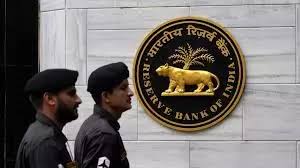Bank fraud amount jumps by three times to Rs 36,014 crore in FY25: RBI

Bank Fraud Amount Triples to Rs 36,014 Crore in FY25: RBI Report
In a stark warning to the financial sector, the Reserve Bank of India (RBI) has revealed a significant surge in bank fraud cases in the fiscal year 2024-25. According to the latest data released by the central bank, the total amount involved in bank frauds has skyrocketed to Rs 36,014 crore, which is more than three times the figure recorded in the previous year.
Sharp Rise in Fraud Cases
The RBI’s report highlights that both the number of bank frauds and the quantum of money involved have seen a steep increase. In FY24, the total fraud amount stood at approximately Rs 11,800 crore; however, in FY25, it jumped dramatically to Rs 36,014 crore. This indicates not only an increase in the number of frauds but also a rise in the scale and complexity of such crimes.
Furthermore, the central bank attributes this rise to various factors, including sophisticated cybercrimes, increased financial transactions, and vulnerabilities within some banking systems. While frauds have traditionally been linked to credit-related issues, recent trends show a growing prevalence of technology-driven frauds.
Breakdown of Fraud Types
The RBI categorizes bank frauds into multiple types. Among these, frauds related to advances (loan-related frauds) continue to dominate. However, frauds involving digital banking, unauthorized electronic transactions, and identity theft have also witnessed a sharp rise. This trend reflects the increasing digitization of banking services.
In particular, cyber frauds are especially concerning as they exploit gaps in IT infrastructure, phishing, malware attacks, and social engineering tactics. Therefore, the RBI report stresses the urgent need for banks to strengthen cybersecurity frameworks and adopt advanced technologies like AI and machine learning to detect and prevent such frauds early.
Impact on Banking Sector and Economy
The surge in frauds poses a serious threat to the integrity of the banking system and erodes public trust. Large-scale frauds often lead to significant financial losses for banks, which can impact their profitability and capital adequacy. Additionally, these frauds affect credit growth and investor confidence in the sector.
Moreover, economists warn that if these rising frauds go unchecked, they could have a broader impact on the economy, especially since banks play a critical role in funding businesses and infrastructure development. It also places additional pressure on regulatory authorities to tighten oversight and enforce stricter compliance norms.
RBI’s Response and Measures
In response to the growing challenge, the RBI has stepped up its supervisory role and introduced multiple measures to curb frauds:
- Enhanced Monitoring: The RBI has mandated banks to implement robust fraud detection and reporting mechanisms. Consequently, banks are required to report fraud cases above a certain threshold promptly to the central bank.
- Cybersecurity Guidelines: New guidelines emphasize strengthening IT security infrastructure, conducting regular audits, and training bank staff in cyber risk management.
- Collaborative Approach: The RBI encourages banks to share information about fraud patterns and suspicious activities through secure channels to create a collective defense.
- Use of Technology: Banks are urged to adopt advanced data analytics, artificial intelligence, and machine learning models to identify anomalies and potential frauds in real time.
- Customer Awareness: Public awareness campaigns are being intensified to educate customers about safe banking practices, phishing scams, and protecting personal information.
Challenges Ahead
Despite these initiatives, banks face several challenges in fraud prevention:
- Evolving Techniques: Fraudsters continuously innovate, using complex and often cross-border schemes that are hard to detect.
- Resource Constraints: Moreover, smaller banks may lack the technological resources and skilled personnel required to implement sophisticated fraud prevention systems.
- Data Privacy Issues: While sharing information among banks is crucial, it raises concerns over data privacy and regulatory compliance.
Conclusion
In conclusion, the RBI’s latest data on bank frauds serves as a wake-up call for the entire banking ecosystem. The tripling of fraud amounts to Rs 36,014 crore in FY25 underscores the urgent need for enhanced vigilance, technological upgrades, and a coordinated response among regulators, banks, and customers alike.
Therefore, strengthening cybersecurity, improving internal controls, and fostering transparency will be key to safeguarding the banking sector’s health and maintaining public confidence. As India’s banking system continues to evolve and embrace digital transformation, staying ahead of fraud risks will be critical to ensuring sustainable growth and financial stability.






